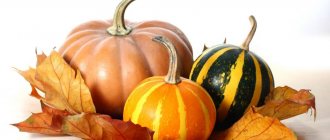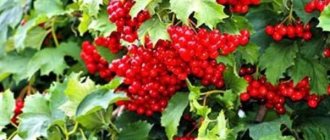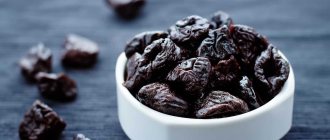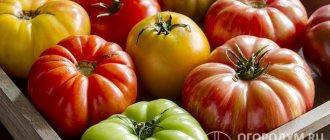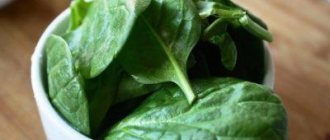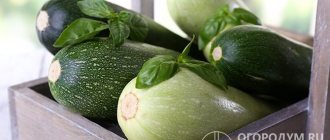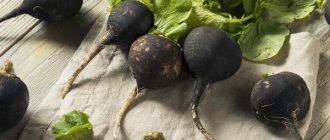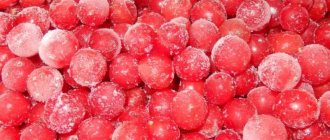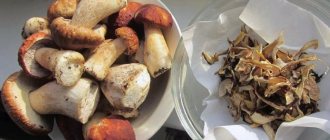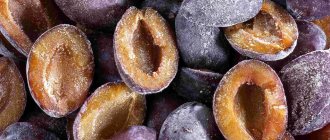There are several ways to prepare pears for winter storage. They are entirely preserved in 3-liter jars, dried, smoked, and prepared in the form of jam, preserves, and juice. In winter, such products will be eaten, and consumers will receive a pleasant taste sensation from it. But the benefits of such pears compared to fresh fruits will be minimal. Either their tasty juice will disappear from the fruit tissues, or the amount of useful elements will decrease. How to keep pears fresh for the winter at home?
Fresh pears are rich not only in natural water (their pulp contains about 85% liquid), but also in organic amino acids, vitamins, proteins, carbohydrates, vegetable proteins, and minerals. In order for all these elements to enter the human body without losing their beneficial qualities, it is necessary to preserve the fruit in the form in which they were removed from the branches of the tree. In addition, in cold winter it will be pleasant to feel their fresh taste and hear the fruity aroma, reminiscent of the warm autumn sun.
Which dryer for vegetables and fruits is better?
When to collect
In order to remove fruits from a pear tree that will not lose their consumer qualities during storage, it is necessary to take into account their biological characteristics. Their preservation is affected by their degree of maturity at harvest. In winter, the pear will remain juicy and tasty if it is collected in a timely manner, at a time when the fruit is at a certain stage of ripeness.
Pears are able to ripen during storage. This happens if they are collected immature, but have already accumulated a sufficient level of nutrients. During this period, they are able to absorb oxygen and carbon dioxide from the air without being tied to the mother plant, and carry out metabolic and hydrolytic processes. Chief among these processes is the ability to convert starch into sugar.
How to prepare apples and pears for winter storage
The first step is to know when to remove apples and pears for storage. The fruits of winter varieties are usually harvested in September, but you need to focus not on time, but on the ripeness of the fruit.
Pears are picked slightly unripe, so that when stored for storage they are still hard, but have already acquired the color characteristic of the variety. The apples should also be firm. Fruits that have already fallen from the tree are not suitable for storage: firstly, they are overripe, and secondly, they are damaged. Even a small scratch will lead to rapid spoilage of the fruit.
Apples and pears are removed from the tree along with the stem
In order not to destroy a large harvest of apples and pears, it is best to harvest the fruits in dry weather, when the dew has already dried. If fruits are frozen during overnight frosts, they are collected after thawing, but frozen fruits are not stored for a long time and are used for processing. Don't know what to do with your apple and pear harvest? Prepare apple juice, homemade cider, apple jam, bright and tasty pear jam.
Apples and pears carefully removed from the tree are sorted. Whole medium-sized fruits are selected for storage. To protect them from pests, a small piece of cotton cloth is moistened with glycerin and wiped over the fruit.
Processed fruits must be washed thoroughly before eating.
Collected fruits cannot be immediately sent for storage in a cold cellar with a temperature of 1-2°C. After sharp cooling, they will become covered with condensation, and wet fruits will easily begin to rot. Therefore, before storing in the cellar, apples and pears are placed for some time in a cooler room than the room in the house, so that the temperature difference is not so contrasting.
Collection time
The timing of harvesting for subsequent storage is influenced not only by the degree of ripening, but also by the climatic and weather conditions of the growing region. To maximize the shelf life of pears, they are harvested in warm, dry weather. Depending on the variety, harvest maturity occurs at different times. There are different winter, autumn and summer varieties of fruits.
Melon: health benefits and harms
When to collect summer
In summer varieties, the timing of the onset of the consumer and harvest phases of ripening almost coincides. They are removed from the branches 3-5 days before the onset of the consumer phase, in order to have time to prepare for processing, transportation, and sale. Early picked pears are not suitable for long-term storage. Shelf life ranges from 10-15 days to 1-2 months. Summer varieties, such as Lada, Cathedral, Rumyannaya Kedrina, Detskaya, Summer Duchess, Morning Freshness, July Rannyaya, Moldovskaya Rannyaya are ready for eating from mid-July to the end of August.
When can you take autumn photos?
Fall pears that are picked at the ripe stage will become edible after an average shelf life. If they are kept in normal apartment conditions at an air temperature of 18 ° C to 22 ° C, they will be usable 2-3 weeks after harvesting.
In the conditions of a fruit storage or vegetable chamber of a refrigerator, the consumer phase of maturity for autumn varieties will occur only after 2-3 months. Harvesting of autumn varieties begins in mid-September. By the end of autumn, you will be able to feast on Bere Moskovskaya, Krasnobokaya, Pamyati Yakovlev, Moskvichka, and Mramornaya pears.
When to harvest late varieties
Winter pears are harvested before the onset of cold weather so that they cannot be damaged by early frosts. They are usually in the removable maturity phase at this time. The speed at which they reach consumer maturity will depend on storage conditions. Some varieties of winter pears can ripen within six months and remain suitable for consumption until spring.
Winter varieties come in three types depending on shelf life. Noyabrskaya, Nart, Kyure, Elena ripen earlier than all winter varieties and will be suitable for eating in January. Saratovka, Pass-Crassan, Kyrgyz winter, Olivier de Serre pears are stored until the onset of the spring season. In May it will be possible to eat fruits of the varieties Dekanka Zimnaya, Izyuminka Kryma, Tikhonovka, and Maria.
How else can you preserve the harvest?
You can store pears on the balcony or in the basement. A dark, unheated but frost-free room in a residential building, for example, a pantry or closet, is also suitable. The optimal temperature for storage is from 0 to 1 °C. Before storing fruit, the room should be disinfected: put hot coals or sulfur and close the doors tightly. After 2-3 days the procedure can be completed. Fruit should not be stored in rooms where there is mold or mildew on the walls. If the humidity level in the room is exceeded, then place a container with slaked lime in it. It will help eliminate excess moisture.
In the refrigerator, pears are stored in plastic bags. They must have holes in them. They are packaged in 1–1.5 kg. Periodically check whether there are any rotten ones. If the fruit shows signs of rotting, then the bag with the entire filling is thrown away.
Collection time for subsequent processing
For canning, cooking jams, confitures, preserves, squeezing juice, and making wine, pears are removed at the stage of technical ripeness. At this time, the fruit is easily separated from the stalk, filled with juice, but still has a fairly elastic, sweetish-tasting pulp that retains its shape well. Summer and autumn varieties are suitable for processing. Harvesting starts in mid-summer and ends in mid-autumn.
Pitless apricot jam: a recipe for the winter
Varieties suitable for long-term storage
Much depends on the variety of pears. Most often, hybrid species bred for regions with unfavorable weather conditions exhibit resistance.
Autumn varieties
The collection period begins in September and lasts 2 weeks. Autumn-type varieties are stored for about 1.5 months if all requirements are met. Pears are characterized by a high sugar content, which makes them juicier and sweeter.
— Veles
The pears will be ripe by the beginning of autumn. Ripe fruits are orange in color with red spots on the sides. The average weight reaches 150 g. There are 3 or 4 fruits on the branches.
In terms of productivity, the variety belongs to the average type. Trees of this variety require annual autumn pruning. The fruits are highly frost-resistant.
— Bere Moscow
This hybrid is recommended for storage in an unripe form. In early autumn, when one side becomes slightly red, the fruits are removed. Trees of the variety are resistant to low temperatures and infection by parasites.
— Duchess
The hybrid obtained as a result of selective pollination has revealed shortcomings that do not allow it to be grown in the regions of Siberia and the Urals. The variety is not resistant to frost and temperature changes.
The weight of the fruits reaches 200 g, their sugar content does not exceed 13%. These hybrids are well transported and stored, maintaining their taste.
Autumn-winter varieties
The fruits of these varieties are harvested later, at the end of the first autumn month. Dates may vary depending on weather conditions. Hybrids are suitable for transportation, are stored longer, and have thick skins.
— Red-sided
The fruits are green and begin to turn red on one side when ripe. Fruit weight is about 170 g. Due to their dense structure, they do not have the same juiciness indicators as autumn varieties. The disadvantage of growing is the falling of fruits from the trees.
Winter varieties
These species are considered the most suitable for conservation. With proper selection and provision of conditions of detention, they have the longest shelf life.
A special feature of the harvest is the removal of all fruits in mid-autumn and gradual ripening at home.
— Yakovlevskaya
The fruit is red. Weight reaches 300 g. Despite their resistance to frost and high yield, they have a significant drawback: the fruits tend to become smaller in the 3rd year of fruiting.
— Saratovka
The hybrid was bred by Saratov scientists. With minimum requirements, it is stored until February-March. The trees begin to bear fruit by the 5th year of growth.
The fruits are smooth, dense, green-yellow. The variety is resistant to frost, fungal diseases, and pests. Shows a high level of fruiting. Pears taste distinguished by their sweetness and wine aroma.
How to shoot correctly
Any fruit intended for long-term storage is collected in such a way as not to disturb the waxy coating on the surface skin and to prevent mechanical damage. Gardeners have developed a special technology for removing pears from tree branches. The fruits are eaten in calm, warm weather; there should be no droplets of moisture on the surface of the leaves and fruits. Cloth gloves are put on your hands.
Work begins from the bottom of the tree, gradually rising from the lower branches to the upper ones. The pear is grasped with the entire palm so that there is no pressure on individual points of the fruit. After this, using your fingers, separate the petiole of the fruit from the tree branch. Fruits at the stage of removable ripeness are easily separated from the branch. They do not need to be pulled off or rotated around the axis so as not to damage the tree branch.
Diseases of pears during storage
If the crop was harvested at the wrong time and stored in the wrong conditions, all sorts of pear diseases can develop. Often, infection begins on site and appears during fruit storage.
Diseases can be either bacteriological (rot) or physiological (tan, wet burn, browning of the core).
Important!
It is extremely important to regularly monitor the safety of the crop: the first check is after 10-15 days, subsequent checks are once a month.
Damaged copies must be disposed of.
How to remove from a tall tree
Fruit harvests are harvested from tall trees by climbing onto a folding stepladder of the required height or using special fruit pickers attached to a long handle. They can be purchased at gardening stores, or you can make them yourself from plastic bottles. During harvesting, pears are placed in baskets, perforated plastic, wooden boxes with smooth walls, at the bottom of which there is soft paper or small shavings.
How to treat currants in the fall against pests and diseases
Preparing fruits for long-term storage
Before sending pears for storage, they must be carefully inspected, so to speak, a selection must be made, namely, fruits must be found without any scratches, dents, rottenness or other damage (it is better to immediately discard any questionable specimens). Then sort by size, carefully placing the fruits in boxes.
Important!
One bad pear can end up ruining the entire batch.
Video: when and how best to harvest pears
How to store
Before placing pears in storage containers, they are carefully inspected. The fruit must have a stalk, the skin of the fruit must remain intact. Fruits with mechanical damage or traces of insects are sent for processing. Pears at home can be stored in the vegetable department of the refrigerator, in cool conditions in the pantry, in a cold cellar or basement.
If a technical room with shelving is selected for storage, it is pre-prepared - the walls, ceiling, flooring are disinfected, and the shelves of the shelving are treated. The required temperature regime is created in the room (from +1 °C to +4 °C), air humidity is maintained within 80-90%. At low humidity, fruits will begin to lose moisture at an accelerated pace. The room must be ventilated.
How to keep it fresh for a long time
Whole, well-preserved pears are placed in boxes in a vertical position. The stalks should remain at the top of the fruit. The pears are placed on the bases of the fruits; the dried petals of the inflorescences are left on them in a residual form. Containers without lids for storage must be dry, clean, and have small ventilation holes in the walls.
The method of laying pears in boxes depends on the height of the side walls. If the walls allow them to be placed in two rows, then the layers are sprinkled with dry straw or shavings. If fruits are stored at home not in boxes, but in bulk on racks, then they are also placed with their tails up, and straw or shavings are scattered between the fruits.
Benefits of fruit
Pear is one of the healthiest delicacies. With a low calorie and sugar content, pears have a huge supply of nutrients and vitamins . This fruit surpasses even blackcurrants in vitamin C content.
Folic acid, which is contained in pears, is very useful for pregnant women and young children . The potassium content in this fruit is extremely high, so pear fruit has a beneficial effect on the functioning of the heart muscle .
Eating two fresh pears on an empty stomach will relieve heartburn and eliminate intestinal discomfort. This is why eating this fruit fresh is so important. How to store pears at home?
How to store in the refrigerator
For relatively short-term storage, unripe autumn pears are placed in the vegetable section of the refrigerator, which will then ripen within 2-3 months. Early ripening varieties are stored in the freezer. They are picked from the tree at the stage of consumer maturity, separated from the stalks, washed, dried, cut into slices, and cleared of seeds.
Then the pear parts are placed on a shelf with a low “shock” freezing temperature. Freezing time under such conditions is about 2 hours. Then the frozen pieces are placed in bags or plastic containers with lids and sent to a regular freezer. It will take a long time to defrost for eating raw. Defrosting is carried out on a regular refrigerator shelf. To prepare compotes, pear pieces are not defrosted.
How to treat a greenhouse in the fall after harvesting
Storage options in the basement or cellar
Storing pears in a cellar is easier than in an apartment, but long-term storage is out of the question. At best, you can hope to have fresh fruit in mid-January. Only selected medium-sized pears are placed in the cellar, without rot, damage to the skin, dents or other defects, and always with the stem.
It is important to create the correct humidity. The easiest way to do this is to place a container of sand in the center of the room, which is periodically moistened. Excessively dry air destroys pears even more than high humidity: this causes them to quickly dry out, become wrinkled and tasteless.
Pears are placed on shelves in a row so that the fruits do not touch each other. You can cover the top with fir branches, but be careful not to damage the skin.
Storage in boxes
If there are no shelves or they are occupied, you can put pears in wooden boxes, no more than two layers. In this case, approximately 5 cm should remain to the top so that the pears are not accidentally damaged. It is important that the fruits do not come into contact with each other, and sand is ideal for this purpose.
Proceed as follows:
- They take wooden boxes and fumigate them with sulfur.
- The sand is heated over an open fire or on an electric stove. You can take a mountain or river one.
- As soon as the sand has cooled, it is poured onto the bottom of the box. To prevent him from waking up through the gap, you can first spread out unnecessary newspapers.
- Pears are placed on the sand with the stems up so that the distance between the fruits is 2-3 cm.
- Sand is poured in to hide the stems and a row of pears is placed again.
Belukhin Sergey Vasilievich
Agronomist of the farm LLC "Zelenaya Dacha"
Ask a Question
The second row is also covered with sand and placed in the darkest place in the basement. Usually large volumes of pears are not stored this way: it is difficult to control the quality of the fruit, so a lot of it spoils. But it is quite possible to store 1-2 boxes of 10 kg each.
Instead of sand, you can use wood ash, moss or fern leaves. There is information about the successful use of onion peel filling. The main thing is that the material is hygroscopic or bactericidal.
How to store for the winter
Constant optimal storage conditions, a clean, ventilated dark room, the absence of other types of vegetables and fruits nearby - these are the conditions that are necessary for the long-term preservation of pears in the winter. Only those fruits that meet the requirements for the removable ripeness phase will be stored for a long time. Fruits should not have soft flesh, a strong aroma, or the color of the skin of a ripe fruit. Only unripe pears can be stored for a long time.
How to store in the cellar for the winter
There are some other requirements for a clean, disinfected cellar room in which boxes of unripe pears are planned to be stored. The main thing is that the cellar should not be very damp or dry (optimal air humidity is 85%) and warm (required temperature from 0°C to + 4°C). It should have ventilation and a separate compartment for placing pears. It should not be penetrated by insects and rodents that spend the winter in the underground.
How long can apples and pears be stored?
Winter apples and pears are stored for 3 to 8 months, and, as a rule, pears spoil faster. The keeping quality of fruits depends not only on the variety, but also on growing conditions, primarily on temperature and humidity during the growing season.
Thus, fruits that ripen in moderately warm weather without sudden temperature changes are stored longer. Excessively hot weather speeds up ripening, but at the same time shortens the shelf life of apples and pears.
Fruits that ripened during periods of prolonged rains are stored for about 2 months less than those grown in favorable weather conditions. Lack of heat, light and excess moisture reduce the resistance of apples and pears to mechanical damage and disease infection.
Reviews
The most powerful source of ethylene in vegetable stores is bananas. It is better not to store anything near them. Berries are well stored with fruit. Cherries and blueberries do not themselves deteriorate their qualities under the influence of ethylene, nor do they affect other types of fruits.
Sergey
The most delicious and high-yielding winter varieties of pears are Dekanka Krasnokutskaya and Parizhnka. The trees of these pears are not very tall, making them easy to care for and collect fruits. Their fruits can be stored in a cold basement until February.
Marina
Some gardeners do not like to grow pears; they are considered to require more complex care than apple trees. In addition, not everyone is able to store these fruits for a long time. But this opinion is unfair. If you collect the fruits on time and create optimal storage conditions, you will be able to enjoy pears for a long time and with pleasure.
Health to you and your loved ones! Natalya Belokopytova.
Fruit selection
Perhaps the main condition for long-term storage of pears is their careful selection .
have proven themselves the most suitable for fresh storage.
It is recommended to remove pears from the tree while they are still unripe , because during storage they will have time to ripen. Thanks to this subtlety, rotting and spoilage of fruits is significantly reduced.
The second factor to pay attention is the appearance of the fruit. They must be without signs of spoilage, whole, dry, hard, without symptoms of disease, without various defects. The presence of a stalk is required.
The third rule concerns the pear picking itself. The weather must certainly be dry . If frosts begin and the temperature drops to -15 C at night, then the fruits become unsuitable for fresh storage.
The fruit must be removed carefully, without pressing hard on them. You need to grab the pear with your hand, press on the stalk and, lifting it a little, separate it from the branch.
Methods of storage in the ground
If there is no cellar or basement, pears can be stored in the ground. We've found two ways to keep these fruits great through most of the winter. True, you will have to work hard - it is difficult to organize storage space.
Pears in the hole
The method can be used in areas with deep groundwater or on hills. To preserve the harvest, a hole is dug, the length and width of which are arbitrary, and the depth is 120-150 cm. As soon as the hole is dug, they begin laying the fruit according to the following scheme:
- The pears are placed in boxes, which are lowered into a hole and placed one on top of the other so that there is half a meter left to the top.
- A pipe with a diameter of 100 mm or more is placed in the center. Its lower end should be raised 50 cm from the ground.
- The top of the pit is covered with slate, boards and other available materials, and then covered with earth in a layer of at least 40 cm.
We need to finish the work before the first frost. Later you can open the hole, take out the box and immediately restore the soil layer. This way, pears can be stored for several months, but can be damaged by rodents.
Storage in the ground
This method takes less time. They dig a hole up to half a meter deep, the width and length are arbitrary. Pears are carefully selected, whole, without defects, the fruits are packed in plastic bags, which are immersed in a pit. The bags are lined up in a row, with a layer of spruce branches placed on top to scare away pear-loving animals. The final stage is to pour the soil in a layer of 25-30 cm, then the pears can be stored until the New Year holidays.
It is difficult to find a hole under the fallen snow, so a long stake is driven into its bottom, which will later serve as a guide.

